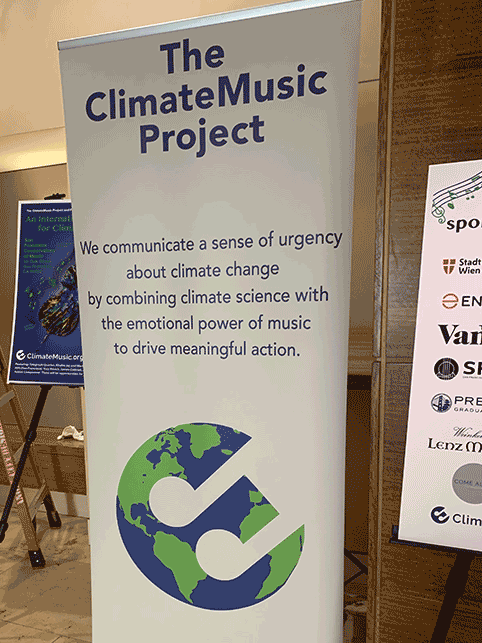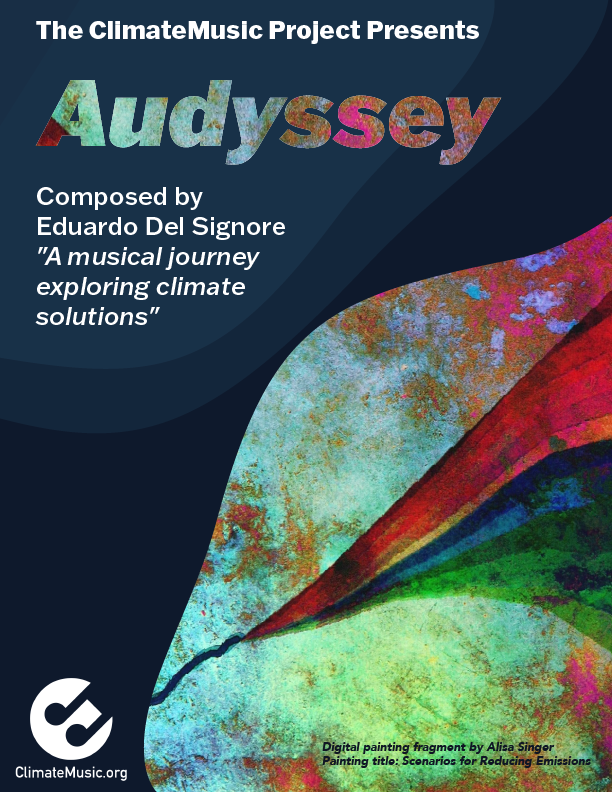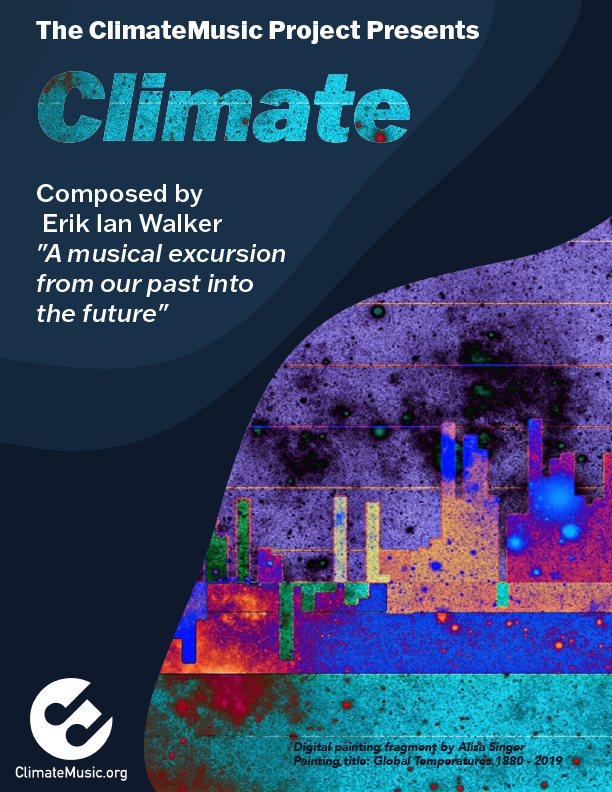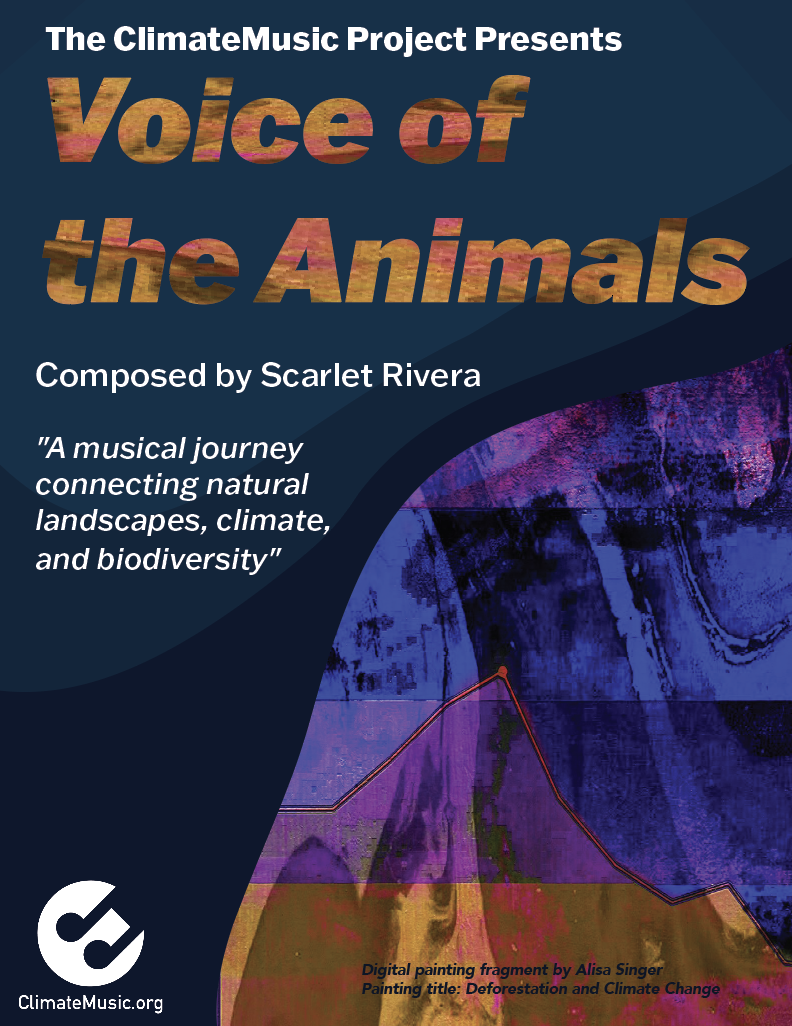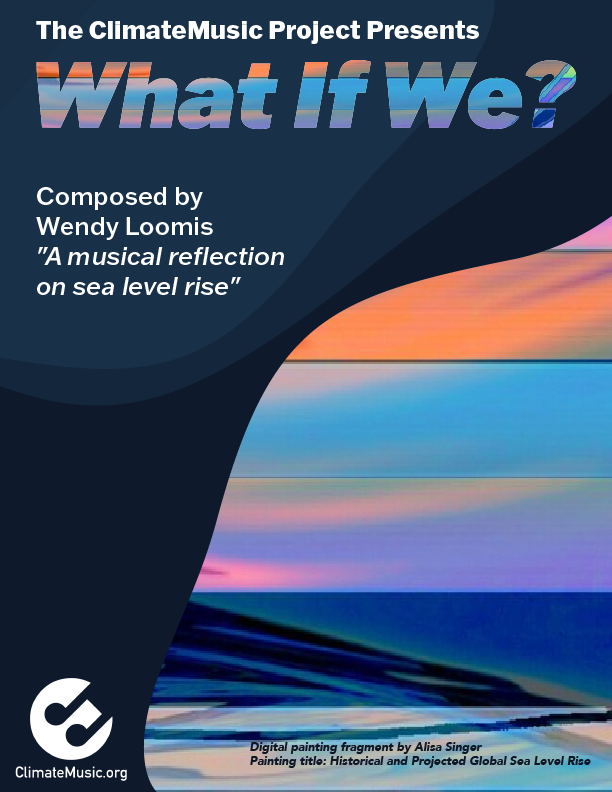Audyssey is a musical journey exploring climate solutions by composer Eduardo Del Signore with visual designer Angelo Chiacchio in collaboration with The ClimateMusic Project. It premiered privately at a World Economic Forum event in New York City in September 2022 and publicly at a New York Times/KQED Public Radio event in San Francisco in October 2022.
In 10-minutes, Audyssey introduces solutions that could limit future warming, and in doing so it draws from the IPCC’s Special Report on Global Warming of 1.5° C . It references scientific data and model projections for two future pathways, considering both mitigation and non-mitigation scenarios.
It also takes us on a musical and visual journey to landscapes and communities that can be saved or will disappear, depending on how we act in the short-term.
Finally, the piece is a meditation on the “human condition” that has precipitated the climate emergency and on the prospect for our species to rediscover a more balanced relationship with the rest of life on Earth.
Where does inspiration come from?
There’s a place in my Heart where inspiration dwells, I don’t know where it came from nor where will it go, but I sure feel its presence here, now. It’s the place where Audyssey became obvious and started its journey, just like swallows on season’s change knowing where to go. Bringing messages to everyone: “watch out for droughts of kindness, empathy & common sense…! Stay safe from storms of anger and fear..! Beware of the souls’ starvation in greed. Audyssey is a story telling me about plentiful outcomes of awareness and joy; about the fundamental importance of knowing yourself, discovery realization of peace, clarity and choice.
Audyssey, audacity of the journey is the destination itself.
–Eduardo Del Signore
The referenced data sets include both rapid mitigation and “Business as Usual” scenarios for fossil fuel use, land carbon sequestration, and energy investment.
Sonifications (audio displays–like a graph, but just with sound) of these data sets were created using Highcharts Sonification Studio and integrated into the music. Unlike in some of our other work, the integration of data and music does not correspond to a specific chronology. Rather, the sonifications are discrete, earcon-like elements in the music (recognizable as piano sounds) that create a varied soundscape and correspond to what is happening in the visuals: The sonifications of the Business as Usual data sets reflect more CO2 escaping into the atmosphere, while the rapid mitigation data sonifications express how action can prevent the accumulation of atmospheric CO2.
The sonification for rapid CO2 reduction (both through emissions cuts and atmospheric drawdown) provides a signature for the piece, as it is the first piano sound heard as the composition opens, and it is the only sonification to continue throughout the second part of the piece.
Here is the graph, along with its sonification (click to listen):
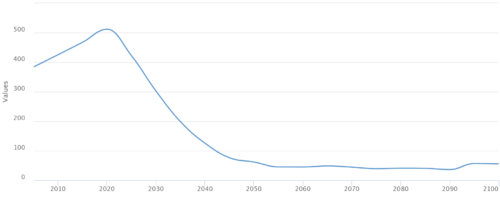
The second part of Audyssey highlights the beauty of the natural world and opens a window on the landscapes and communities that can still be preserved–if we act now.
Pathway to limiting future climate warming and disruption
This overview provides insights into the science behind Audyssey. To better understand the music, it is important to recognize the basic causes of our climate crisis. This is followed by information about how we still might limit future climate warming and disruption.
Finally, we invite you to access our action page below, which offers practical ideas for action for everyone.
Where We Are Now
The burning of fossil fuels and resulting input of carbon dioxide (CO2) into the atmosphere– combined with other human activities that alter the natural landscape–has drastically raised the average temperature of the Earth’s atmosphere since 1850 (Fig. 1).

Figure 1: Increase in average global near surface air temperatures (blue, right axis) and carbon dioxide (red, left axis) from 1850 to 2010. Global average temperature today is ~1.3 degrees Celcius (°C) above what it was in 1850, and CO2 is ~130 parts per million (ppm) higher than in 1850.
Scientists seeking to understand global warming have created computer models that reflect the influence of CO2 and other human activities on average global temperatures. Those “climate models” are used by the UN’s Intergovernmental Panel on Climate Change (IPCC) to predict how changes to human activities might reduce the impact of global warming (known as “mitigation”).
Did you know…

Rising global temperatures are strongly correlated with rising CO2 in Earth’s atmosphere. The more CO2 in the atmosphere, the warmer the planet will get, so reducing the amount of carbon in the atmosphere is critically important.
Limiting Future Climate Warming and Disruption
Scientists and policymakers have developed different scenarios that might play out in the future. One scenario imagines that we take collective action to limit global warming since 1850 from 2°C to 1.5°C, a scenario we refer to as “1.5 C” (Fig. 2, red points).
Another scenario imagines what the world would look like if we take little to no action to mitigate global warming, a scenario referred to as “Business as Usual” (Fig. 2, blue points).
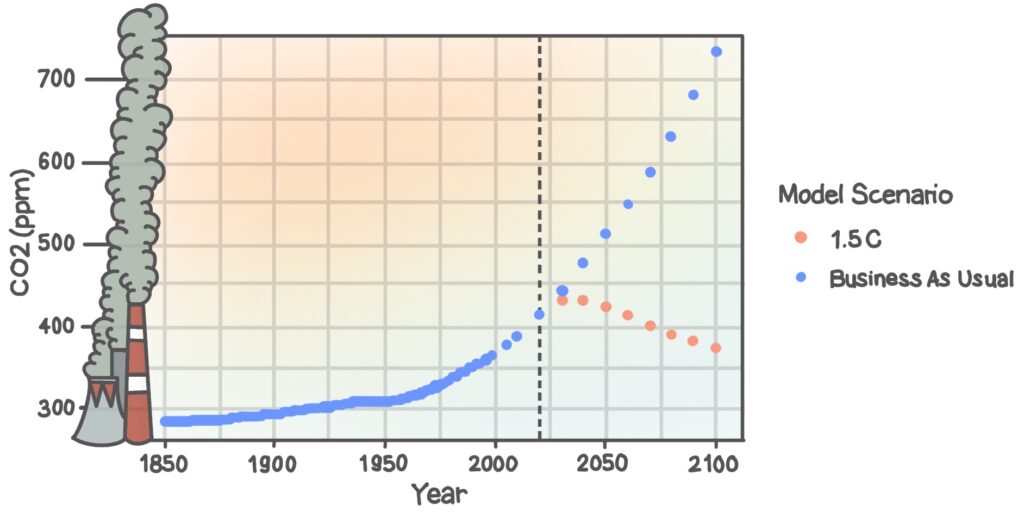
Figure 2: CO2 records and estimates from 1850-2020 (left of the dashed line), and CO2 estimates from climate model scenarios through the end of the century (right of the dashed line). Dashed line indicates the year 2020. Red points are for the 1.5 C scenario, blue dots are for the Business As Usual scenario. The data from 1850 to 1999 are historical data collected yearly, while data from 1999 on are climate model predictions.
Under the Business as Usual scenario, we are on track to see atmospheric CO2 concentrations above 700 ppm by the end of the century (Fig 2, blue points to the right). However, the 1.5 C scenario shows that reducing fossil fuel burning and drawing CO2 out of the atmosphere can bring atmospheric CO2 levels down below 400 ppm (Fig. 2, red dots).
That reduction in CO2 is critical to keeping global average temperatures within 1.5° C of those during 1850. Notice that under the 1.5 C scenario, CO2 concentration peaks in the year 2040, then falls back to 374 ppm by 2050, which is where it was around 2000.
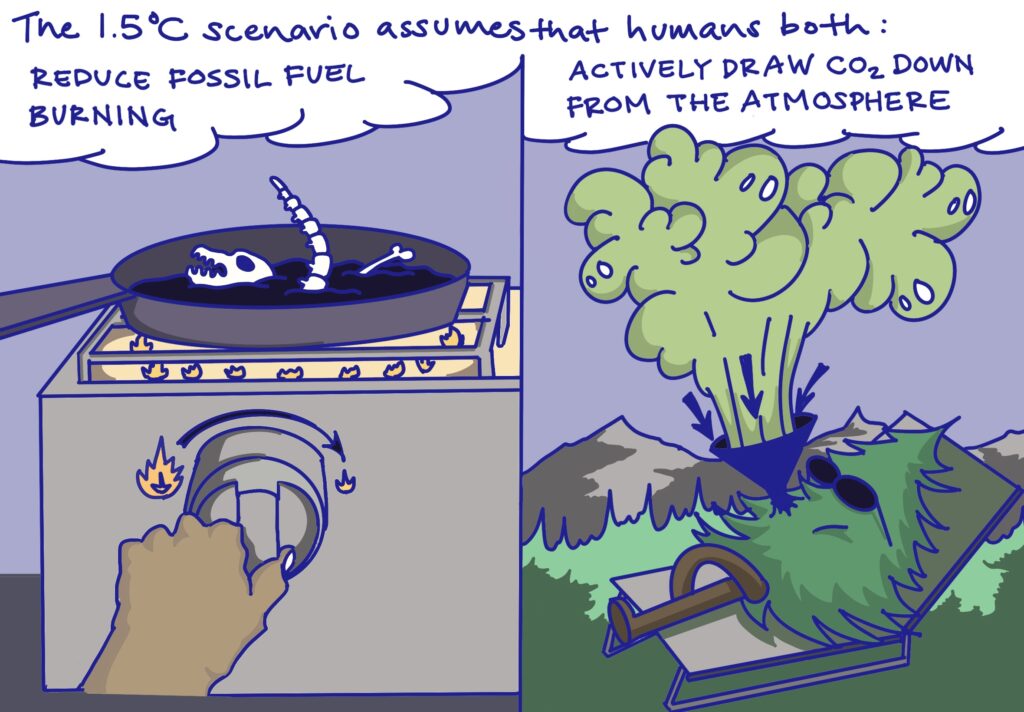
The clear difference in these two scenarios highlights the different climate realities that could derive from the decisions we make today.
Getting as Close to 1.5° C as Possible
Scientists and policymakers have considered a number of human actions in their modeled scenarios. The two primary ways that humans can mitigate global warming are to reduce the burning of fossil fuels and actively drawing CO2 from the atmosphere. The reduction of energy derived from fossil fuel burning is a primary means of reducing CO2 inputs to the atmosphere. Modeled scenarios show that fossil fuel derived energy will need to dramatically decrease to keep global average temperatures within 1.5° C of those in 1850 (Fig. 2, red points).
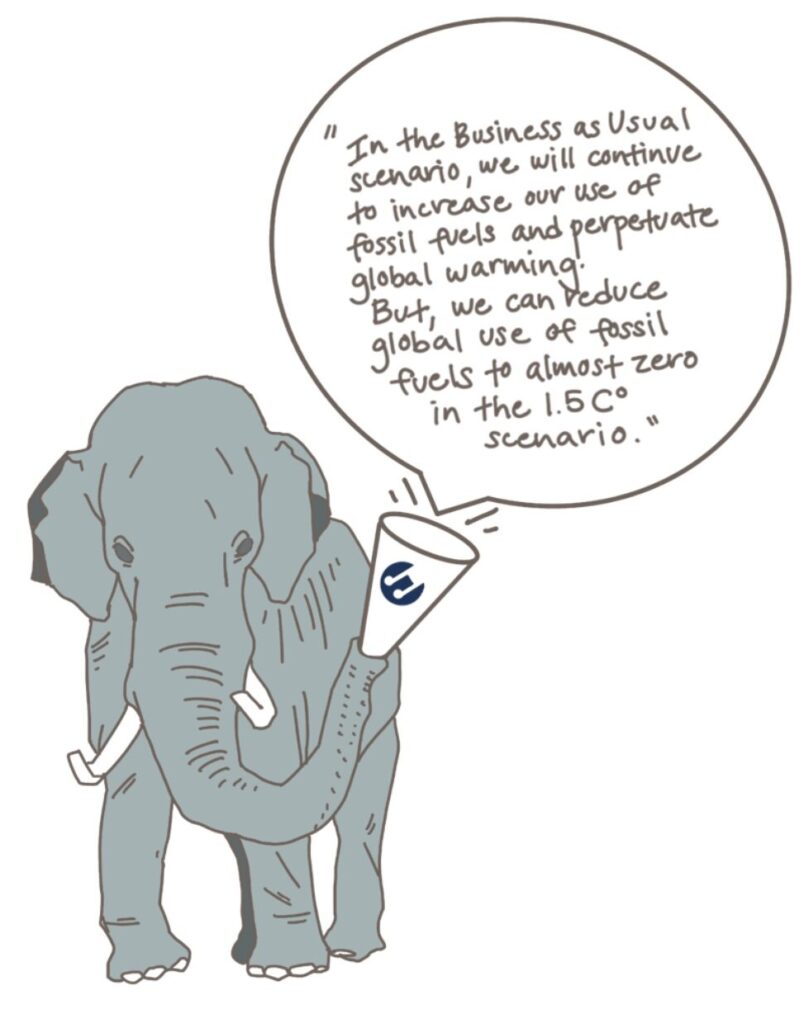
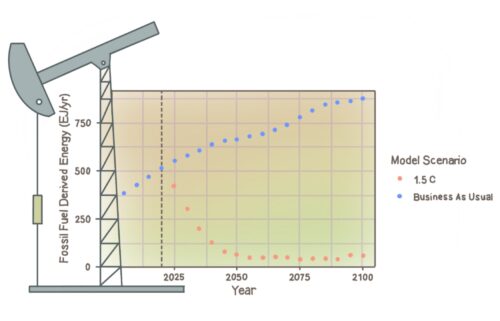
However, the Business As Usual trajectory indicates that without collective action, fossil fuel derived energy will only increase (Fig. 2, blue points).
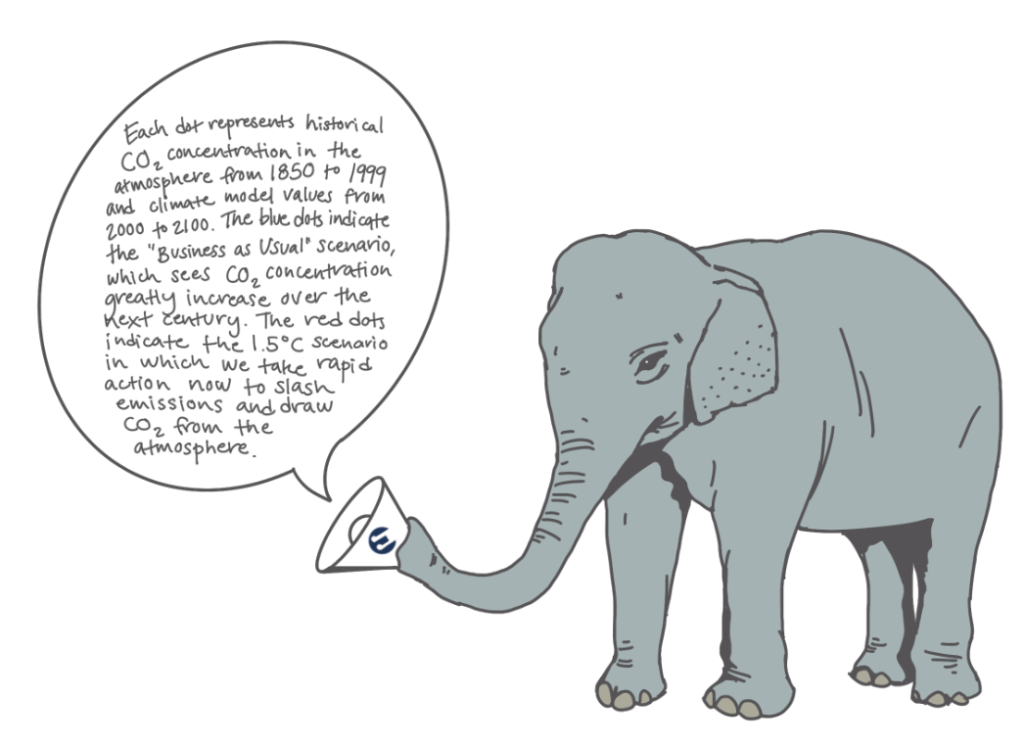
These changes will require significant financial investments, which are included in the modeled scenarios (Fig. 3). For the 1.5 C scenario, major investments are needed in renewable and efficient energy – over $1 trillion per year for most of the coming century (Fig. 3, red points).
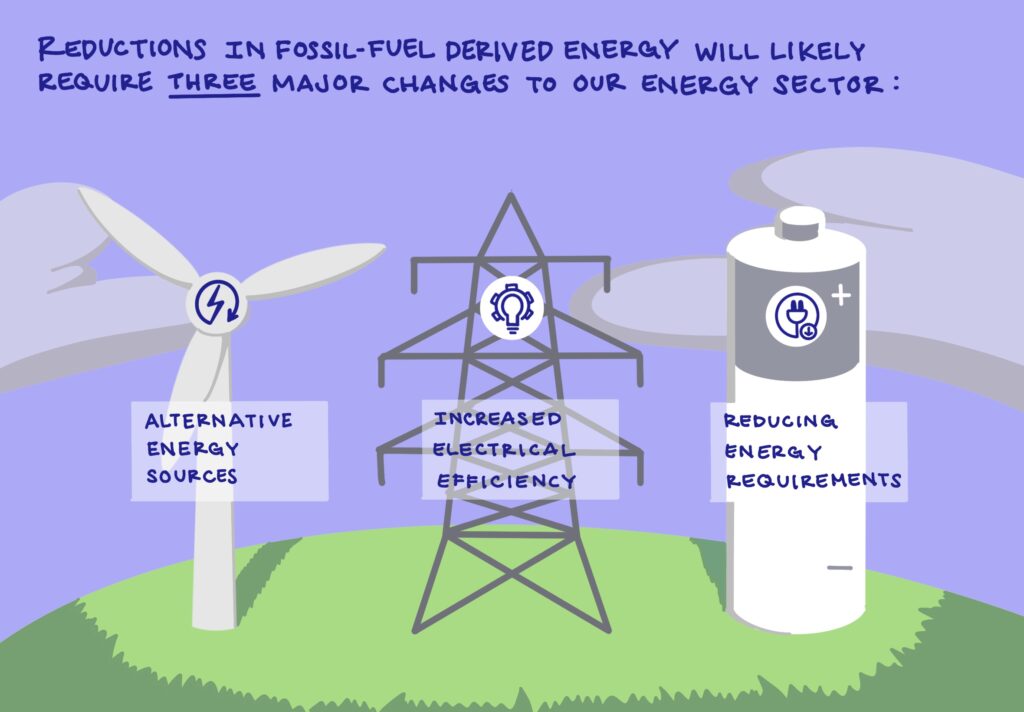
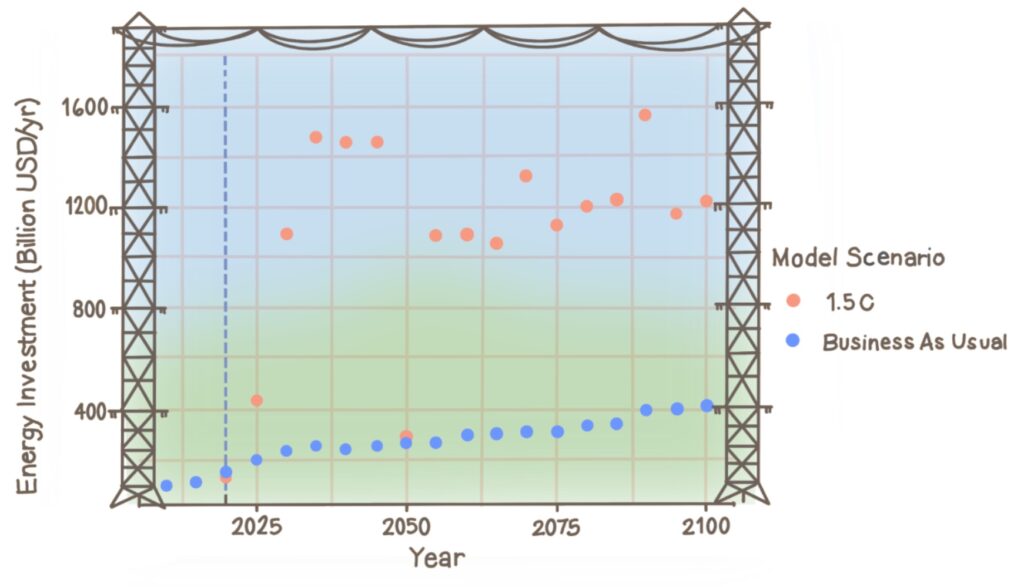
Figure 3: Modeled annual investments in energy efficiency, renewable energy sources, and related infrastructure for the 1.5 C scenario (red points) and Business as Usual scenario (blue points). Dashed line shows the year 2020.
Some of ClimateMusic’s Science Advisors study how CO2 can be drawn out of the atmosphere through certain agricultural practices which have the ability to capture CO2 and store it in soil in the form of minerals and organic matter. We refer to these and similar practices as “Land Carbon Sequestration” and measure the practice by the rate of carbon dioxide removed from the atmosphere per year.
IPCC scientists modeled how such land C sequestration would impact average global temperatures, showing that a dramatic increase in land C sequestration is critical to a 1.5 C scenario.
Action Ideas and Resources
- Learn more about the climate emergency and challenges specific to your region with the IPCC’s regional factsheets.
- On the left is a painting titled Scenarios for Reducing Emissions by Alisa Singer, and on the right is the IPCC’s AR4 graphic that inspired it.

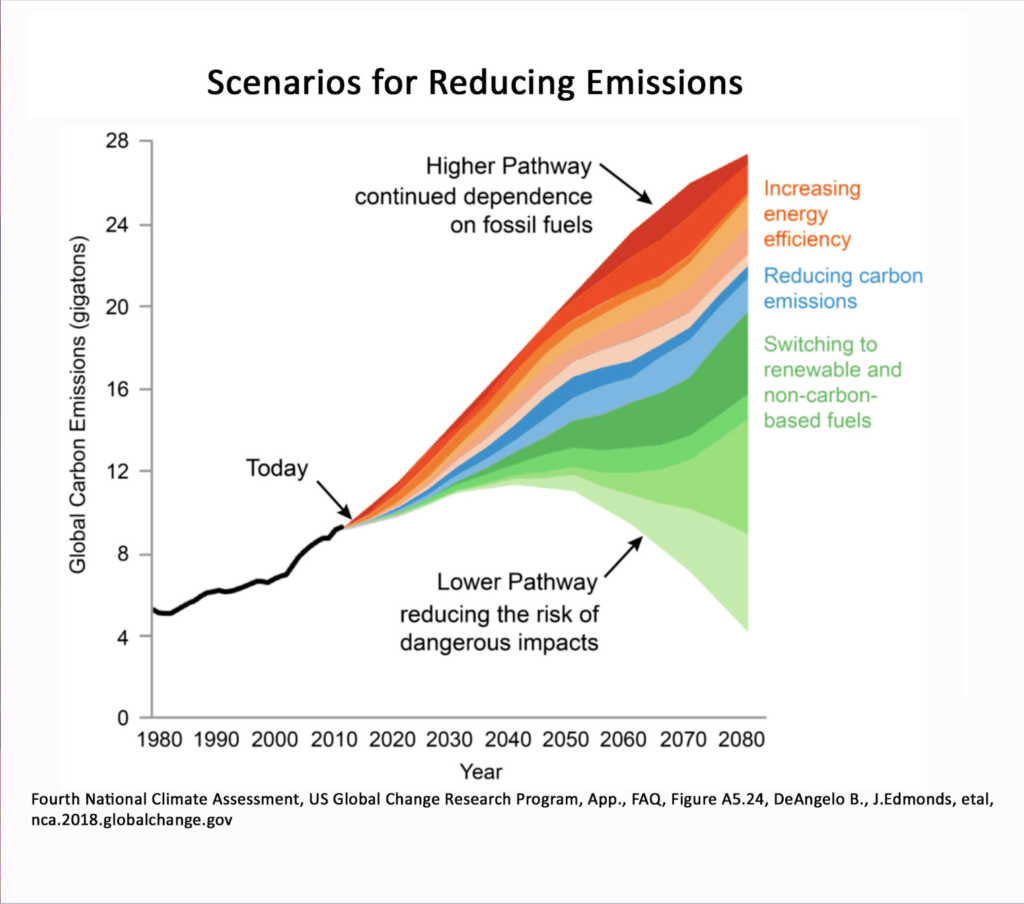
- It can be intimidating to think about implementing climate-centric policies on such a rapid timescale, but it is important to remind ourselves about what is possible. Over the span of months, we completely restructured our day-to-day routines to stave off the worst impacts of the COVID-19 pandemic on a global scale. We can do something similar for the climate crisis over the next decade.
- While there are barriers to facing our climate crisis, we sometimes overestimate them and underestimate our capacity for change. For example, most Americans do not realize how their peers care about environmental issues. In fact, however, 66-80% of Americans support climate change mitigation policies [12].
- When we center climate action in our own lives, and talk about it in our communities, we can begin to collectively expand and mobilize widespread existing support for climate action. This will also lead to meaningful and impactful changes in public policy at all levels.
- This comes with numerous benefits, many of which are centered in Audyssey. The transition to renewable energy and more sustainable practices presents major opportunities to solve other structural issues simultaneously, deepen our connection to nature, and improve overall well-being.
- Learn more about what you can do with on the ClimateMusic action page.
